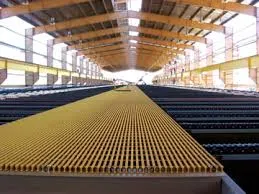
-
 Afrikaans
Afrikaans -
 Albanian
Albanian -
 Amharic
Amharic -
 Arabic
Arabic -
 Armenian
Armenian -
 Azerbaijani
Azerbaijani -
 Basque
Basque -
 Belarusian
Belarusian -
 Bengali
Bengali -
 Bosnian
Bosnian -
 Bulgarian
Bulgarian -
 Catalan
Catalan -
 Cebuano
Cebuano -
 China
China -
 China (Taiwan)
China (Taiwan) -
 Corsican
Corsican -
 Croatian
Croatian -
 Czech
Czech -
 Danish
Danish -
 Dutch
Dutch -
 English
English -
 Esperanto
Esperanto -
 Estonian
Estonian -
 Finnish
Finnish -
 French
French -
 Frisian
Frisian -
 Galician
Galician -
 Georgian
Georgian -
 German
German -
 Greek
Greek -
 Gujarati
Gujarati -
 Haitian Creole
Haitian Creole -
 hausa
hausa -
 hawaiian
hawaiian -
 Hebrew
Hebrew -
 Hindi
Hindi -
 Miao
Miao -
 Hungarian
Hungarian -
 Icelandic
Icelandic -
 igbo
igbo -
 Indonesian
Indonesian -
 irish
irish -
 Italian
Italian -
 Japanese
Japanese -
 Javanese
Javanese -
 Kannada
Kannada -
 kazakh
kazakh -
 Khmer
Khmer -
 Rwandese
Rwandese -
 Korean
Korean -
 Kurdish
Kurdish -
 Kyrgyz
Kyrgyz -
 Lao
Lao -
 Latin
Latin -
 Latvian
Latvian -
 Lithuanian
Lithuanian -
 Luxembourgish
Luxembourgish -
 Macedonian
Macedonian -
 Malgashi
Malgashi -
 Malay
Malay -
 Malayalam
Malayalam -
 Maltese
Maltese -
 Maori
Maori -
 Marathi
Marathi -
 Mongolian
Mongolian -
 Myanmar
Myanmar -
 Nepali
Nepali -
 Norwegian
Norwegian -
 Norwegian
Norwegian -
 Occitan
Occitan -
 Pashto
Pashto -
 Persian
Persian -
 Polish
Polish -
 Portuguese
Portuguese -
 Punjabi
Punjabi -
 Romanian
Romanian -
 Russian
Russian -
 Samoan
Samoan -
 Scottish Gaelic
Scottish Gaelic -
 Serbian
Serbian -
 Sesotho
Sesotho -
 Shona
Shona -
 Sindhi
Sindhi -
 Sinhala
Sinhala -
 Slovak
Slovak -
 Slovenian
Slovenian -
 Somali
Somali -
 Spanish
Spanish -
 Sundanese
Sundanese -
 Swahili
Swahili -
 Swedish
Swedish -
 Tagalog
Tagalog -
 Tajik
Tajik -
 Tamil
Tamil -
 Tatar
Tatar -
 Telugu
Telugu -
 Thai
Thai -
 Turkish
Turkish -
 Turkmen
Turkmen -
 Ukrainian
Ukrainian -
 Urdu
Urdu -
 Uighur
Uighur -
 Uzbek
Uzbek -
 Vietnamese
Vietnamese -
 Welsh
Welsh -
 Bantu
Bantu -
 Yiddish
Yiddish -
 Yoruba
Yoruba -
 Zulu
Zulu
Proper Methods for Extending a Threaded Rod Safely and Effectively
Understanding the Extension of a Threaded Rod A Comprehensive Guide
Threaded rods are integral components in various engineering and construction applications. They serve the purpose of fastening materials together, providing structural integrity and stability. However, when it comes to the extension of a threaded rod, there are specific considerations to ensure that the rod functions properly and maintains its strength. This article explores how to properly extend a threaded rod, looking into the materials, methods, and precautions necessary for a successful extension.
What is a Threaded Rod?
A threaded rod, often referred to as a stud, is a long, cylindrical piece of metal with continuous threads along its length. These rods are used in many applications, ranging from anchoring systems in construction to parts of machinery. The primary function of a threaded rod is to provide a way to secure materials together using nuts and washers. Ensuring the correct length and strength is crucial, especially when it comes to applications that involve significant load-bearing.
Reasons for Extending a Threaded Rod
There are several situations where extending a threaded rod is necessary
1. Customization In many cases, the standard lengths of threaded rods might not fit specific project requirements. Extending a rod allows users to customize the fit for their applications.
2. Repair or Replacement If a threaded rod has been damaged or shortened due to wear and tear, extending it can be a cost-effective solution.
Methods to Properly Extend a Threaded Rod
extension of a threaded rod how to properly extend a

There are two primary methods for extending a threaded rod using a coupling nut or welding.
1. Using a Coupling Nut - Tools Required A coupling nut, which is a hexagonal fitting with internal threads, and basic hand tools such as wrenches. - Process - First, measure the desired length of extension for the threaded rod. - Cut the rod to the required length if it is too long, or ensure adequate length on both ends if you are using existing rods. - Thread the rod into one side of the coupling nut. Make sure that it is tightly secured, using a wrench to ensure a good fit. - Afterwards, take an additional threaded rod of the same diameter and thread it into the other side of the coupling nut. - Ensure that all connections are tight, and use washers where necessary to improve load distribution.
2. Welding - Tools Required Welding equipment suited for the material of the rod, safety gear, and clamps to hold pieces in place. - Process - Cut the threaded rod to a suitable length, ensuring that both ends are clean and free from debris. - Position the additional rod in alignment with the existing rod. Clamp them securely to prevent movement. - Use appropriate welding techniques (e.g., TIG or MIG welding) to fuse the two rods together. Ensure you maintain a strong weld to bear weight effectively. - Allow the weld to cool, then grind any excess material to ensure a smooth finish.
Precautions
When extending a threaded rod, several precautions should be taken
- Material Compatibility Ensure that the materials used for extension are compatible. Using dissimilar metals can lead to corrosion and failure.
- Strength Calculations Calculate the load-bearing capacity after extension. An improperly extended rod may not handle the applied forces, leading to structural failure.
- Safety Measures Always wear appropriate safety equipment when cutting, welding, or handling heavy materials.
Conclusion
Extending a threaded rod can be a practical solution when the right length or strength is needed for any application. Whether using a coupling nut or welding, it's crucial to follow best practices to maintain the integrity and strength of the assembly. By understanding the techniques and precautions involved, engineers and DIY enthusiasts alike can ensure that their projects remain safe and effective.









